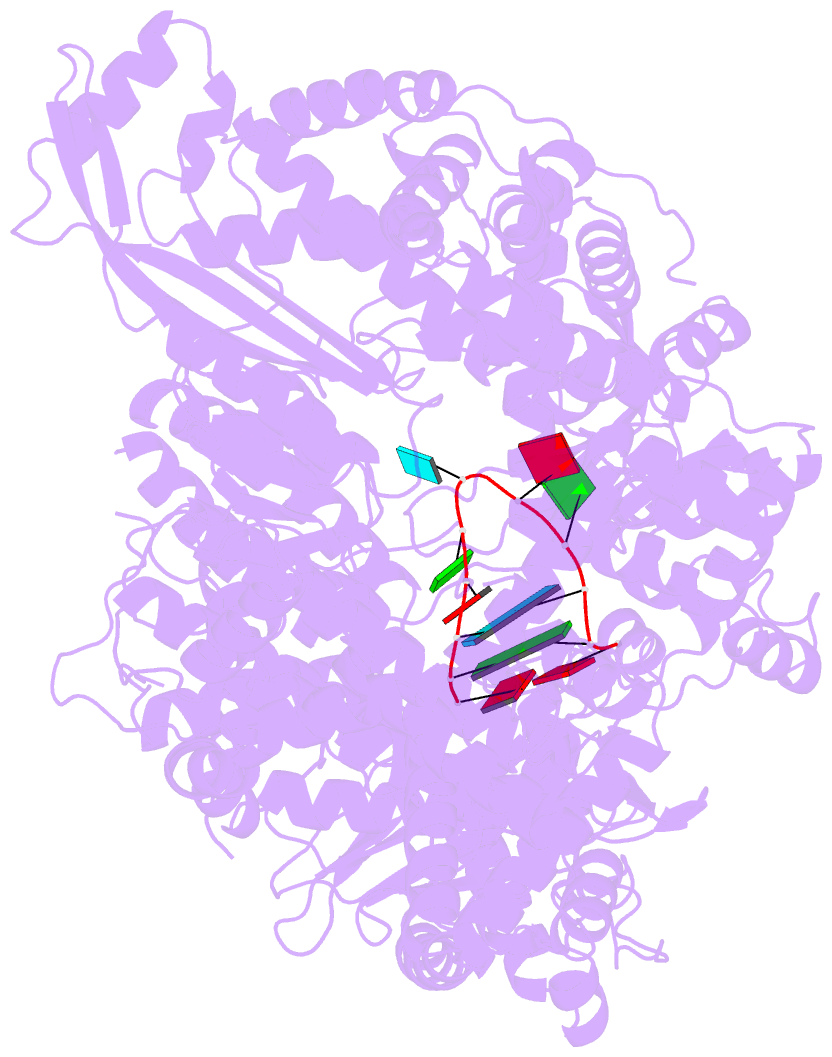Summary information and primary citation
- PDB-id
- 8qh3; SNAP-derived features in text and JSON formats;
DNAproDB
- Class
- viral protein
- Method
- cryo-EM (2.81 Å)
- Summary
- 5'vrna-bound hantaan virus polymerase in monomeric active state
- Reference
- Durieux Trouilleton Q, Housset D, Tarillon P, Arragain B, Malet H (2024): "Structural characterization of the oligomerization of full-length Hantaan virus polymerase into symmetric dimers and hexamers." Nat Commun, 15, 2256. doi: 10.1038/s41467-024-46601-4.
- Abstract
- Hantaan virus is a dangerous human pathogen whose segmented negative-stranded RNA genome is replicated and transcribed by a virally-encoded multi-functional polymerase. Here we describe the complete cryo-electron microscopy structure of Hantaan virus polymerase in several oligomeric forms. Apo polymerase protomers can adopt two drastically different conformations, which assemble into two distinct symmetric homodimers, that can themselves gather to form hexamers. Polymerase dimerization induces the stabilization of most polymerase domains, including the C-terminal domain that contributes the most to dimer's interface, along with a lariat region that participates to the polymerase steadying. Binding to viral RNA induces significant conformational changes resulting in symmetric oligomer disruption and polymerase activation, suggesting the possible involvement of apo multimers as protecting systems that would stabilize the otherwise flexible C-terminal domains. Overall, these results provide insights into the multimerization capability of Hantavirus polymerase and may help to define antiviral compounds to counteract these life-threatening viruses.





